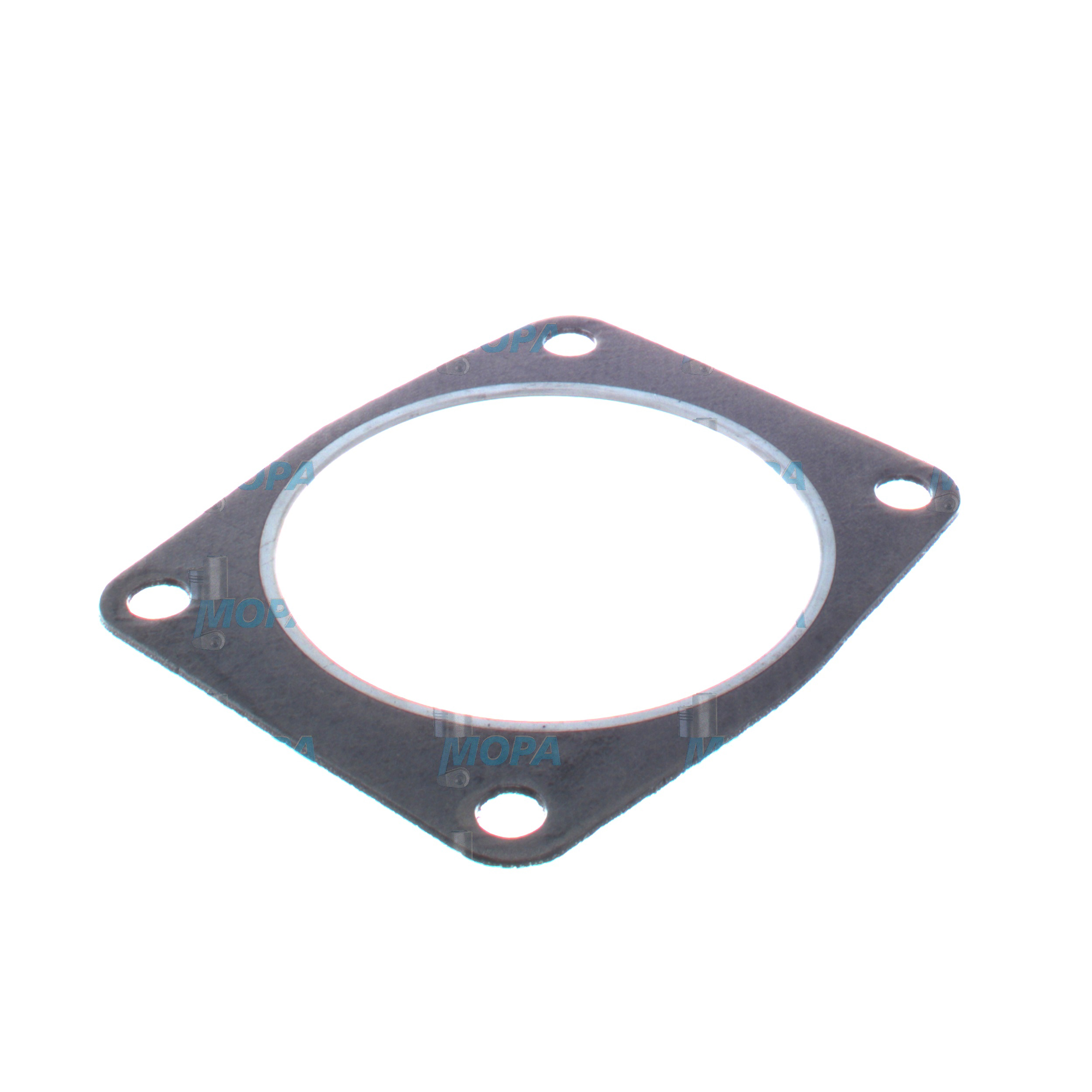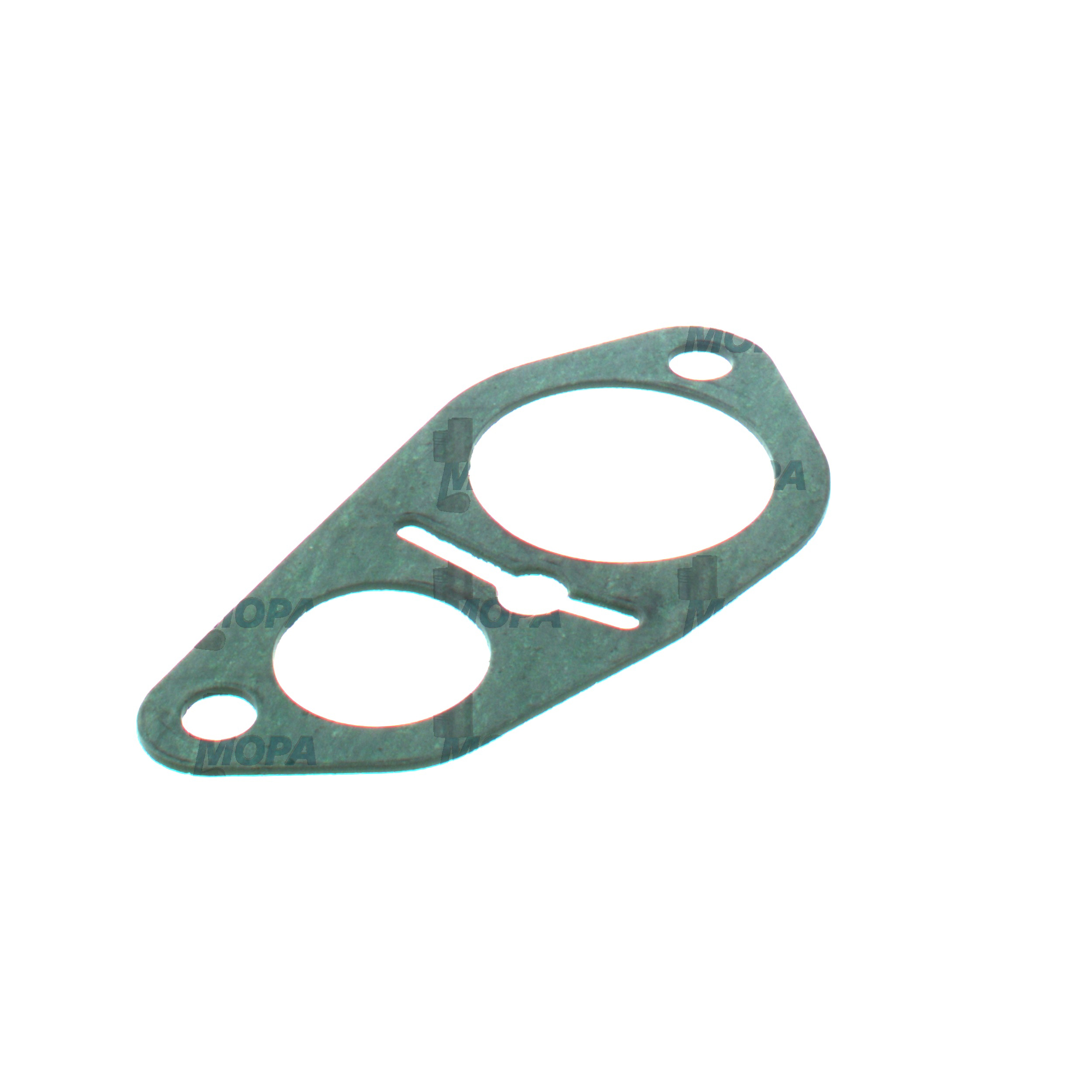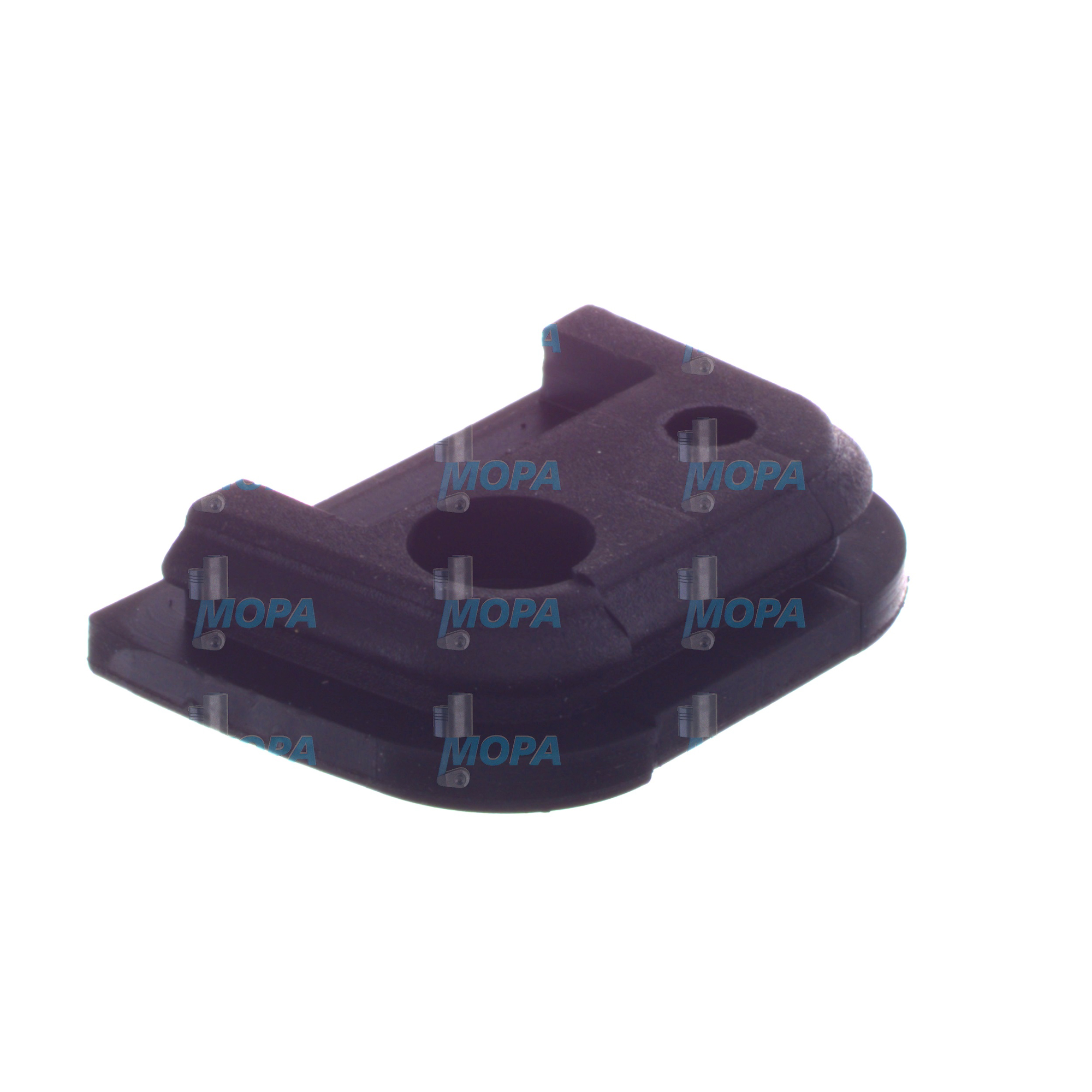GASKET
GASKET Solutions: Gaskets for Marine and Diesel Engines
Gaskets are precision sealing components that sit between mating surfaces and prevent the escape or cross-contamination of media such as combustion gases, lubricating oil, fuel, and coolant. In marine engines, diesel engines, and gas engines, gaskets create reliable, long-term seals under high pressure and temperature. From the cylinder head to the turbocharger flange and the oil pan, properly engineered gaskets protect engine integrity, stabilize performance, and reduce the risk of unplanned downtime. As a category, Gaskets include metal, composite, and elastomer-based designs that compensate for microscopically uneven surfaces, maintain bolt preload, and preserve compression ratios across thousands of thermal cycles.
Technical Function: How a GASKET Supports Engine Performance
A GASKET in a marine engine or diesel engine forms a controlled barrier between two surfaces. Its material compresses under bolt load to fill machining marks and thermal distortion, ensuring a gas-tight and fluid-tight interface. By maintaining the seal, the GASKET preserves combustion pressure, stabilizes temperatures, and prevents oil or coolant loss—direct contributors to efficiency, emissions control, and safety.
Different gasket technologies are used depending on location and load. Multi-layer steel (MLS) head gaskets handle extreme cylinder pressures and rapid thermal swings. Graphite and spiral-wound options are chosen for exhaust manifolds and turbo connections where temperatures are high and flange movement is expected. Compressed fiber and PTFE-based gaskets are common at coolant pumps, oil covers, and fuel system connections, offering chemical resistance and dimensional stability. When matched with the correct torque and surface finish, an OEM parts GASKET delivers consistent sealing performance that meets the engine builder’s design intent.
- · High sealing integrity at pressure and temperature extremes
- · Materials matched to oil, fuel, coolant, and exhaust chemistry
- · Controlled compression and recovery to resist creep and relaxation
- · Stable sealing across thermal cycles and flange movement
- · Precise thickness and bead geometry for correct bolt loading
- · Reduced blow-by, leaks, and contamination risks
Key Interfaces: Head GASKET, Exhaust, Air, and Fluid Systems
The head GASKET is central to combustion control. It seals fire rings around each cylinder while isolating oil and coolant passages, guarding against compression loss and cross-leaks. Exhaust and turbo GASKET joints maintain backpressure and protect downstream components from hot gas leakage. Charge-air and intake GASKETs keep boost pressure stable, which is vital for engine responsiveness and fuel economy. In lubrication and cooling circuits, the right GASKET prevents aeration, maintains pressure, and avoids dilution—critical to bearing protection and thermal balance.
Importance for Engine Operation: Why GASKET Integrity Matters
Compromised gaskets degrade engine reliability and service life. A leaking head GASKET can cause compression loss, misfires, overheating, and oil-water mixing—leading to corrosion, bearing damage, and eventual major overhauls. Exhaust leaks raise compartment temperatures, risk heat-related failures, and can erode turbine efficiency. Intake leaks reduce boost, increase specific fuel consumption, and elevate emissions. Oil or coolant leaks accelerate wear, contaminate surrounding components, and increase fire hazards. For shipowners and plant operators, the outcome is costly: higher fuel bills, environmental compliance issues, and unplanned downtime that disrupts schedules and budgets. Keeping every GASKET within spec directly supports safe operation, predictable maintenance, and full lifecycle value of the asset.
Advantages of OEM Spare Parts Suitable for Gaskets
Selecting OEM spare parts suitable for Gaskets ensures material quality, dimensional accuracy, and sealing geometry that align with the engine’s design criteria. Surface coatings, embossing patterns, and layer stacks in an MLS head GASKET are engineered to match clamping forces and thermal dynamics of a specific diesel engine. Graphite density, winding tension in spiral-wound designs, and elastomer grades for coolants and fuels are precisely controlled so that compression and recovery behave as intended over time.
This precision translates into practical benefits. Correct fit minimizes installation time and rework. Verified chemical compatibility preserves sealing properties in hot oil, biodiesel blends, heavy fuel oils, or glycol-based coolants. Consistent bead heights and thickness tolerances help maintain bolt load, reducing creep relaxation and microleaks. The result is stable performance, better fuel efficiency, and longer service intervals—protecting budgets and extending service life without sacrificing reliability.
MOPA: Your Partner for OEM GASKET Spare Parts
MOPA is an experienced and reliable partner for OEM spare parts Gaskets across diesel and gas engines. We combine speed, quality, and security in sourcing and delivery: rapid quotations, efficient logistics to ports and power plants, and robust traceability that gives purchasing teams confidence in every shipment. Our network covers cylinder head GASKET sets, exhaust and turbo interfaces, charge-air, oil and coolant sealing, and application-specific kits for marine engine platforms.
For purchasers and technical decision-makers, MOPA adds value with knowledgeable support, cross-references to engine types, and documentation aligned with your maintenance strategy. Whether you are planning a scheduled dry-docking or an on-site overhaul, MOPA helps you secure the right OEM parts GASKET at the right time—reducing risk and keeping critical assets running.
Conclusion
Gaskets are essential sealing components that protect combustion pressure, fluid circuits, and overall engine integrity. Choosing OEM spare parts suitable for Gaskets delivers proven fit, durable materials, and predictable performance—raising reliability, safeguarding budgets, and extending engine service life.

Gasket for Reliable EnginesDiscover our gasket (comparison number: 5560110180), a high-quality OEM replacement part that offers the highest precision for your engines. This gasket belongs to the product group gaskets and is specially designed to function optimally under demanding conditions.Efficiency for Engines Suitable for MTUThe gasket provides excellent sealing, suitable for MTU engines. It protects against leaks and maximizes the performance of your engines. Our OEM replacement parts are subjected to strict internal controls for reliable results.

High-Performance Gasket for Efficient Applications Discover our OEM replacement part with the comparison number 04220147 – a precise gasket that creates the developed conditions for optimal engine performance. It ensures that your engines operate exceptionally efficiently, contributing to their longevity.Suitable for MWM & Deutz EnginesThis product is suitable for MWM & Deutz engines and ensures the highest compatibility and performance. Whether in your marine drive or stationary engine, this gasket withstands all practical challenges. Weighing only 0.021 kg, it allows for quick and easy installation, so you can immediately benefit from its quality.

Gasket with Comparison Number 8159012Discover the gasket with the comparison number 8159012, a high-quality item that ensures reliable sealing. This spare part is suitable for Volvo/Volvo Penta engines and offers the necessary quality to meet the performance requirements of your machines. Weighing only 0.001 kg, this spare part integrates seamlessly into the construction of your engines.Internal Control for Best QualityOur gasket has been manufactured under strict internal controls to ensure high standards and durability. Every spare part we sell is crucial for the functionality of your suitable for Volvo/Volvo Penta engines. Trust in our many years of experience in the spare parts industry.

Reliable Gasket for Your EnginesDiscover the gasket with comparison number 20459897, which is excellently suited to the requirements of engines. This OEM spare part is compatible with Volvo/Volvo Penta engines and ensures a reliable seal. Weighing only 0.001 kg, this product is easy to install and handle.Extensive Selection of Spare PartsWith us, you will find a wide range of more than 1 million spare parts. The gasket with comparison number 20459897 is an ideal component and an important part for the continuous functionality of your engines. Our OEM spare parts are highly popular among our B2B customers due to their high manufacturing quality and reliability.

Gasket with Comparison Number 12167957 Discover our gasket with the comparison number 12167957, specifically designed for the typical performance of engines from the manufacturer suitable for MWM & Deutz. This gasket belongs to the product group gaskets and ensures that your MWM & Deutz engines operate efficiently and reliably. Weighing only 0.022 kg, the product is not only pleasant to handle but also simplifies installation.

Top Quality: Gasket – Comparison Number 5801750180 Discover our gasket product with the comparison number 5801750180, suitable for the manufacturer MTU. This gasket element is ideally developed to achieve a reliable seal in your engines. Weighing only 0.01 kg and with compact dimensions of 13.1 cm in length and width, and a height of 0.4 cm, the gasket integrates seamlessly into your existing systems.Efficient Solution: Suitable for MTU Engines Our gasket is suitable for MTU engines of the series 4000, 1163, and 956. It is also compatible with engine types 12V4000M70, 20V1163TB82, 20V1163TB93, and 20V956TB92. This OEM replacement part ensures that your engines maintain efficient performance while minimizing friction losses. Therefore, rely on this gasket to permanently optimize the functioning of your engines.

Gasket for Deutz EnginesDiscover our gasket with the comparison number 01309986, which is specifically designed to meet the highest demands for performance and durability. This gasket belongs to the category of gaskets and ensures that your engine operates smoothly by effectively preventing leaks.Amazing OEM Replacement PartsAs a supplier of OEM replacement parts, we present to you the comparison number 01309986, which is essential for the maintenance of your Deutz engines. Our gaskets are precisely manufactured and provide the quality you need for the long-lasting operability of your machines. These specialized gaskets play a crucial role in enhancing the efficiency and lifespan of your engines.

Gasket with Comparison Number 12308427Discover our gasket, marked with the comparison number 12308427. This OEM spare part belongs to the group of gaskets and offers an effective solution to ensure the functionality of your engines. It is an essential product tailored to the specific requirements of MWM & Deutz engines to deliver maximum performance.Suitable for MWM & DeutzThis gasket is suitable for MWM & Deutz engines and ensures precise fit. Weighing only 0.271 kg, it integrates optimally into your application and crucially protects the functionality of your engines. Rely on selected OEM spare parts that set high standards in quality and reliability.

Discover Gasket with Comparison Number XP54815100080Discover the gasket with comparison number XP54815100080, an essential product designed for MTU engines. This gasket belongs to the group of gaskets and ensures reliable sealing and high performance under heavy loads.Precision for Engines and Their ApplicationsThe gasket is a top-quality OEM replacement part that meets all required quality standards. As an OEM replacement part, it offers precise fitment that you need for stable performance of your engines. Trust in the durability that OEM replacement parts provide – ideally suitable for MTU.

Gasket Comparison Number 01120867 – Your Reliable ProductThe gasket with the comparison number 01120867 is an essential component for optimal engine performance. As an OEM spare part, this product meets the necessary quality standards to fulfill the requirements in marine and stationary applications.

Optimal Gasket for Effective EnginesDiscover the extremely reliable product with the comparison number 5600112080, a gasket specifically designed for MTU engines. This gasket belongs to the article group gaskets and provides excellent sealing, which is crucial for the performance of your engines.

Gasket with Comparison Number 20459222 – Quality OptionalDiscover the gasket with the comparison number 20459222, an essential OEM spare part, suitable for Volvo/Volvo Penta engines. This quality product from the gaskets category is specifically designed to meet the demands of challenging applications. Weighing only 0.014 kg, this gasket provides a reliable seal and optimal functionality for your engines.

Reliable Gasket for Your ApplicationsDiscover our gasket with the comparison number 5362030280, an OEM replacement part, suitable for MTU engines. This product is specifically designed to optimize the performance and sealing of diesel and gas engines. Thanks to its excellent fit and material quality, this gasket efficiently prevents the leakage of fluids.

Your Gasket: Comparison Number 341508530264Discover the gasket with comparison number 341508530264, an OEM replacement part specifically designed to fit MWM & Deutz engines. This product is characterized by precise fits and top-notch quality, ensuring optimal sealing. The gas tank and cooling system significantly benefit from this reliable solution, especially in marine and stationary applications.Efficiency for MWM & Deutz EnginesThis gasket is an essential component, suitable for MWM & Deutz engines. Weighing only 0.003 kg, it offers both robustness and efficiency. Each OEM replacement part is manufactured to high standards to ensure long-term performance. Rely on this gasket, suitable for demanding situations.

Precise Gasket as an Indispensable ComponentDiscover the gasket with the comparison number 12900923, a reliable part specifically designed to ensure the performance of your engines. This product is suitable for MWM & Deutz engines and impresses with exact dimensions of 14.6 cm in length and width, as well as a height of only 0.4 cm. With its minimal weight of 0.034 kg, it is easy to handle and ideal for various applications, including industrial and marine uses.

Reliable Gasket for Marine and Stationary EnginesDiscover the gasket with the comparison number 917003040007 – an essential OEM spare part that provides excellent sealing. This gasket belongs to the group of gaskets and is specifically designed for applications in marine and stationary environments. As a functional product, it is ideal for repairs or maintenance.Optimal Fit in UseOur gasket is suitable for MTU engines and ensures that your engine's performance has recently been optimized. Weighing only 0.005 kg, the product is not only lightweight but also durable enough to provide reliable protection. Trust our years of experience in distributing OEM spare parts, especially valued in the B2B sector.

Gasket with comparison number 12026888 for all applicationsOur gasket with the comparison number 12026888 is the ideal OEM replacement part that caters to a wide range of requirements in the industry. This gasket is characterized by its robustness and durable quality, offering top-notch sealing properties that reliably protect your engines. This product is particularly valuable for facilities where performance and reliability are of utmost priority.

Precision Gasket Suitable for EnginesThe gasket with the comparison number 360498500054 is an essential OEM spare part. It meets high quality standards for gaskets and ensures optimal performance in engines suitable for MWM & Deutz. Weighing only 0.04 kg, this product ensures that machines operate reliably over the long term.Powerful Components for Essential ApplicationsThe gasket is perfectly designed to function in engines that are used in both marine and stationary applications. This precise component is ideal for applications where durability and efficiency are required.

Robust Gasket – The Ideal Choice for EnginesDiscover our gasket with the comparison number 51966010256, a critical OEM replacement part for the efficiency of engines. This gasket meets the highest standards and has been designed to fit MAN D engines, ensuring reliable functionality. Benefit from the precision that this gasket offers for your operation.Precision in DetailThe product impresses with exact dimensions and durability, making it an indispensable component. Tailored as an OEM replacement part, the gasket is suitable for MAN D engines, allowing you to take advantage of the quality provided by manufacturers. Invest in components that last for a long time.

Gasket with Comparison Number 03307634Discover the gasket with comparison number 03307634, an important OEM spare part that delivers optimal performance for your engines. This product is suitable for MWM & Deutz engines and ensures optimal sealing.Quality of OEM Spare PartsThis gasket belongs to the OEM spare parts that meet the highest standards. Compared to aftermarket products, it offers an ideal fit. With the comparison number 03307634, you receive a part that is suitable for MWM & Deutz engines and efficiently supports your work.

Reliable Gasket for Various ApplicationsThe gasket with the comparison number X00A41700009 is an essential OEM spare part. It has been designed to provide perfect solutions for your applications and meets the functions you need for engines. For all your requirements in the area of diesel and gas engines, this product is the right choice.Gasket for MTU EnginesThis reliable OEM spare part is particularly popular as it is suitable for MTU engines. The robust construction of this gasket significantly increases the efficiency of your machines. Make sure to always have this essential component in sufficient quantity to ensure smooth operation.

Optimal Gasket for Marine and Stationary EnginesDiscover the gasket with the reference number 23506547, which is optimally designed to ensure reliable performance of your engines. This product is both significantly important and suitable for MTU engines. Trust in quality.OEM Replacement Parts in Convincing QualityOur gasket is characterized by support from OEM replacement parts, which stand for long lifespan and efficiency. The OEM replacement part with the reference number 23506547 meets all expectations for qualitative solutions, suitable for various applications and engines.

Optimal Solution: Gasket suitable for MWM & Deutz EnginesDiscover the gasket with the reference number 12163453, which is an essential component for your engines. This product belongs to the group of gaskets and ensures that MWM & Deutz engines operate reliably. Thanks to its excellent workmanship, this OEM replacement part meets the highest standards and is highly recommended for any professional use.

Reliable Gasket Suitable for Deutz EnginesDiscover the product with the comparison number 04229703, a gasket specifically optimized for use in Deutz engines. This gasket belongs to the group of gaskets and offers excellent fit and sealing properties. With compact dimensions of 4.8 cm x 4.8 cm and a weight of only 0.012 kg, it is an essential component in your engine service.
